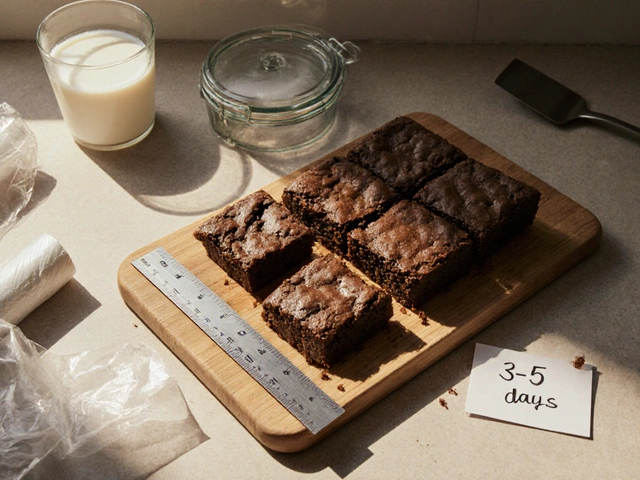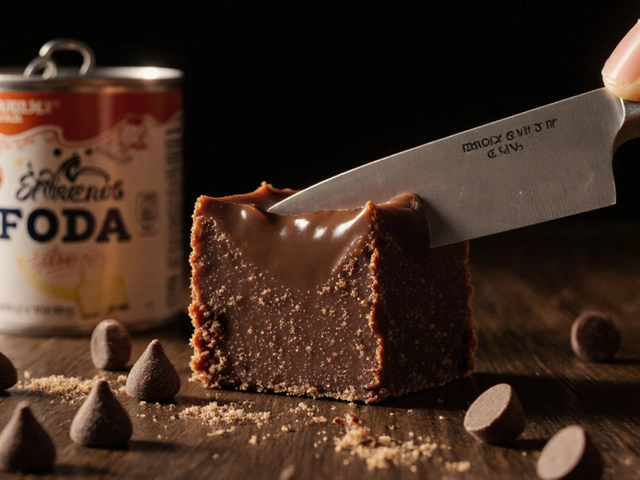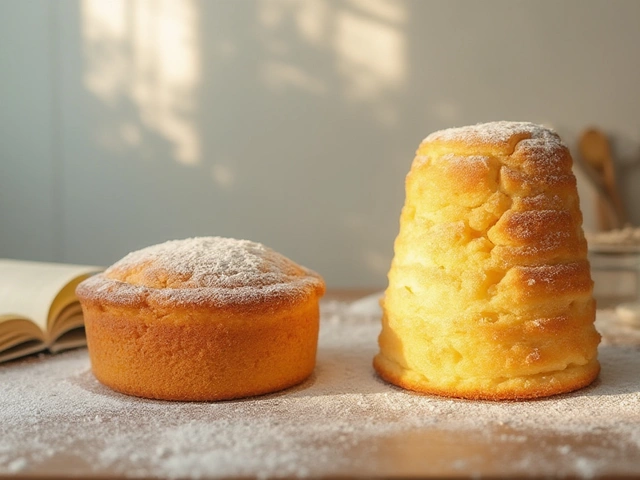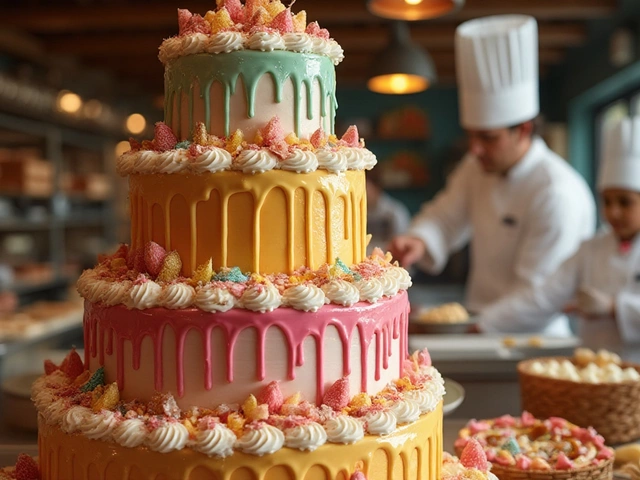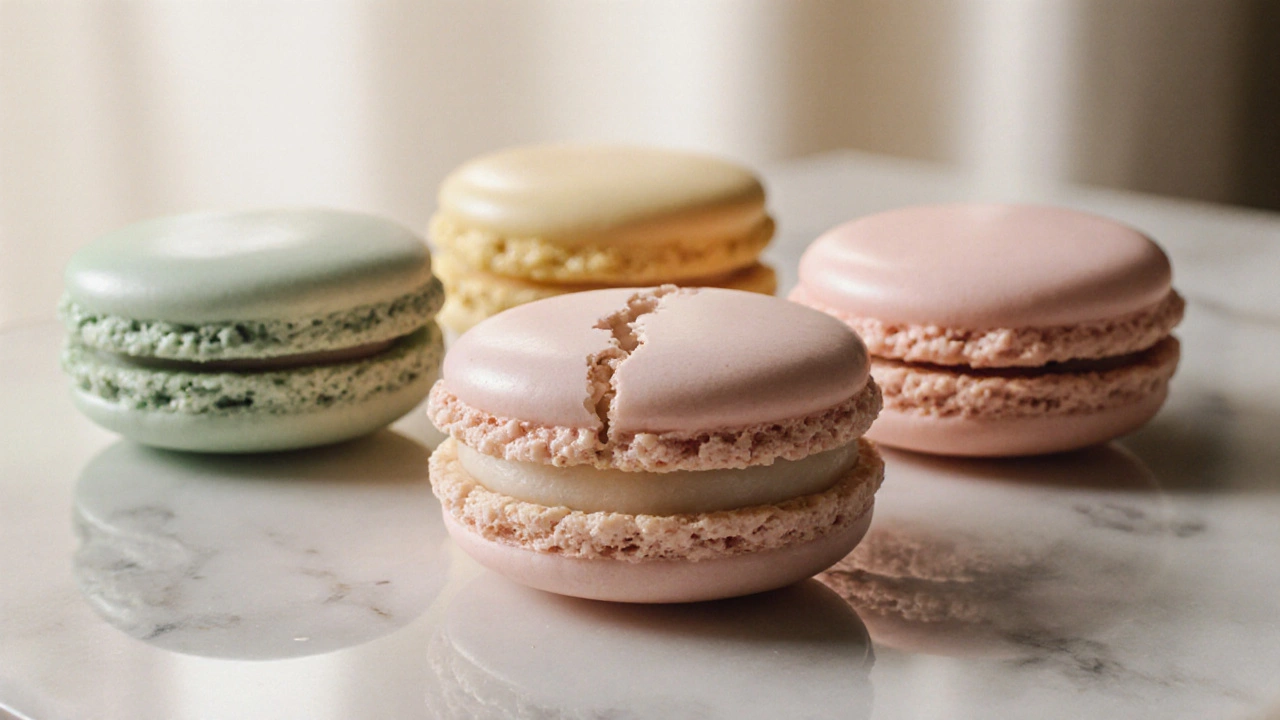
Macaron Pronunciation Checker
The French word macaron is pronounced /ma.ka.ʁɔ̃/ with specific French sounds that differ from English.
ma - Like "ma" in "mama" (short "a" sound)
ka - "ka" as in "car," but softer
ron - Nasal "on" sound (like "awn" but with nose resonance)
Tip: English speakers often pronounce "macaron" with a hard "r" and flat vowel sounds. The French version requires a soft "r" and nasal vowel ending.
Practice Your Pronunciation
When you hear the word macaron is a delicate French pastry made of almond flour, sugar, and egg whites, sandwiched with a flavored filling, you probably picture those colorful, crisp‑outside, chewy‑inside treats. But have you ever wondered what the word actually means in French, where it came from, or how to say it correctly? This guide breaks down the macaron meaning, its history, key ingredients, pronunciation tips, and how it fits into French culinary culture.
Plain definition: what a macaron is
A macaron is a small, round confection that consists of two meringue‑based shells joined by a ganache, buttercream, or jam. The shells are made from a mixture of almond flour, powdered sugar, and egg whites that have been beaten into a fine meringue. The result is a light, airy texture with a crisp exterior that cracks when you bite into it.
Etymology: where the name comes from
The word macaron entered French from the Italian maccherone, which originally meant “a kind of biscuit.” In the 16th century, Italian monk Ètienne de la Fontaine introduced these almond cookies to the French court. Over time, the name was Gallicized to macaron and the recipe evolved from a simple crunchy biscuit to the soft‑sandwiched version we know today.
Historical milestones
- 1800s: French baker Pierre Desfontaines in Paris begins to fill the shells with ganache, creating the modern macaron.
- 1930s: Ladurée opens its first shop on the Rue Royale, popularizing the pastel‑colored, stacked macaron as a luxury treat.
- 1990s: Pierre Hermé pushes flavor boundaries with unexpected combos like rosemary‑olive oil and beet‑ginger.
- 2020s: Macarons become a global phenomenon, with bakeries in Tokyo, New York, and São Paulo offering localized flavors.
Key ingredients and why they matter
The magic of a macaron lies in three core components:
- Almond flour: Gives the shell its mild, nutty flavor and a slightly chewy bite. Using finely ground, blanched almonds ensures a smooth surface.
- Powdered sugar: Helps achieve the glossy finish on the shell and balances the almond’s richness.
- Meringue: Egg whites beaten with granulated sugar create a stable foam that traps air, yielding the light texture.
Temperature and humidity play a huge role. A stable environment around 21 °C (70 °F) and low humidity reduces the risk of cracked shells.
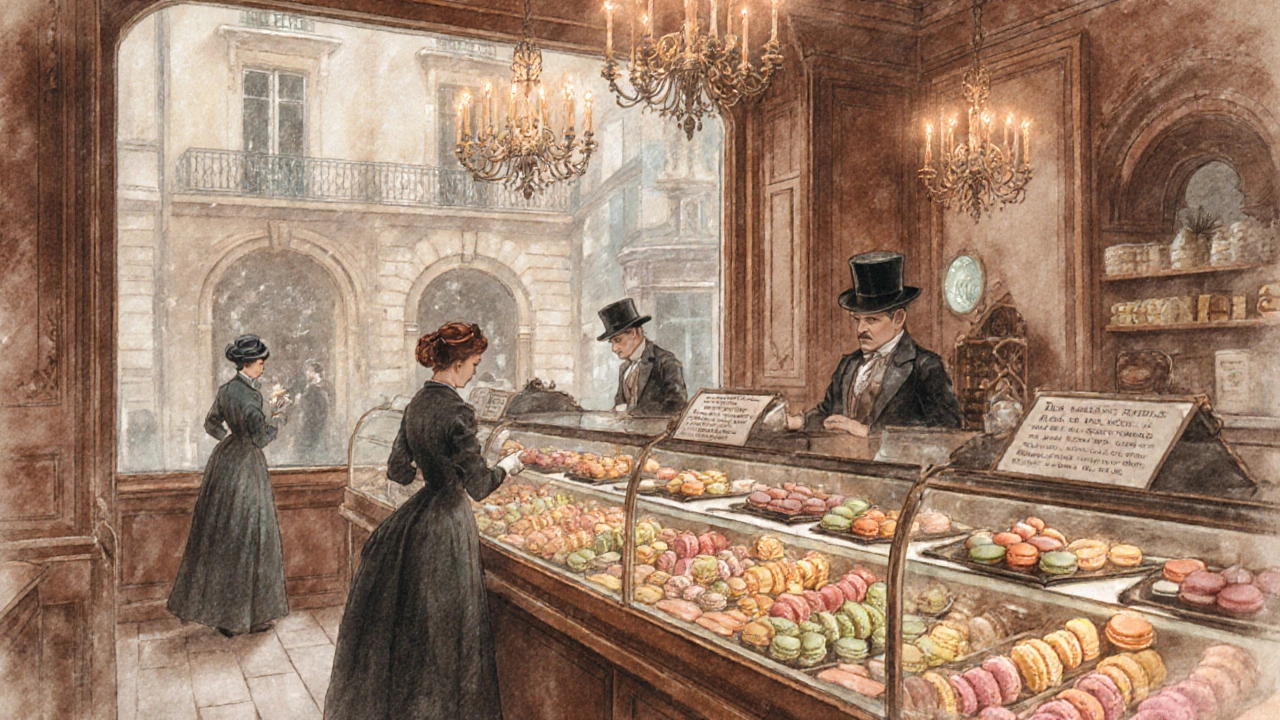
Macaron vs. Macaroon: a quick comparison
| Aspect | Macaron (French) | Macaroon (American) |
|---|---|---|
| Main ingredient | Almond flour | Coconut |
| Texture | Crisp outside, soft inside | Chewy, dense |
| Typical size | ≈2 in (5 cm) diameter | ≈1 in (2.5 cm) diameter |
| Common fillings | Ganache, buttercream, jam | Often plain or dipped in chocolate |
| Origin | France (16th century) | Scotland/USA (19th century) |
Confusing the two is easy, but the flavor profile and cultural context differ dramatically.
Iconic French pâtisseries that defined the macaron
Two names dominate the world of premium macaron production:
- Ladurée: Founded in 1862, Ladurée turned the macaron into a luxury brand, famous for its pastel shells and classic flavors like pistachio and rose.
- Pierre Hermé: Known as the “Picasso of Pastry,” Hermé introduced avant‑garde flavors such as olive oil & lemon and salted caramel with hazelnut.
Both bakeries still bake on the same principles, but Hermé’s experimental approach shows how the macaron can evolve while staying true to its French roots.
Pronouncing macaron correctly
In French, macaron is pronounced /ma.ka.ʁɔ̃/. Break it down:
- ma - like “ma” in “mama” (short “a”).
- ca - “ka” as in “car,” but softer.
- ron - nasal “on” (think “awn” without the “w”).
English speakers often say “muh‑kuh‑RON” with a hard “r.” The French version rolls the “r” and ends with a nasal vowel, giving it a lighter feel. Practice by saying “ma‑ka‑ron” while keeping your throat relaxed for the nasal “on.”
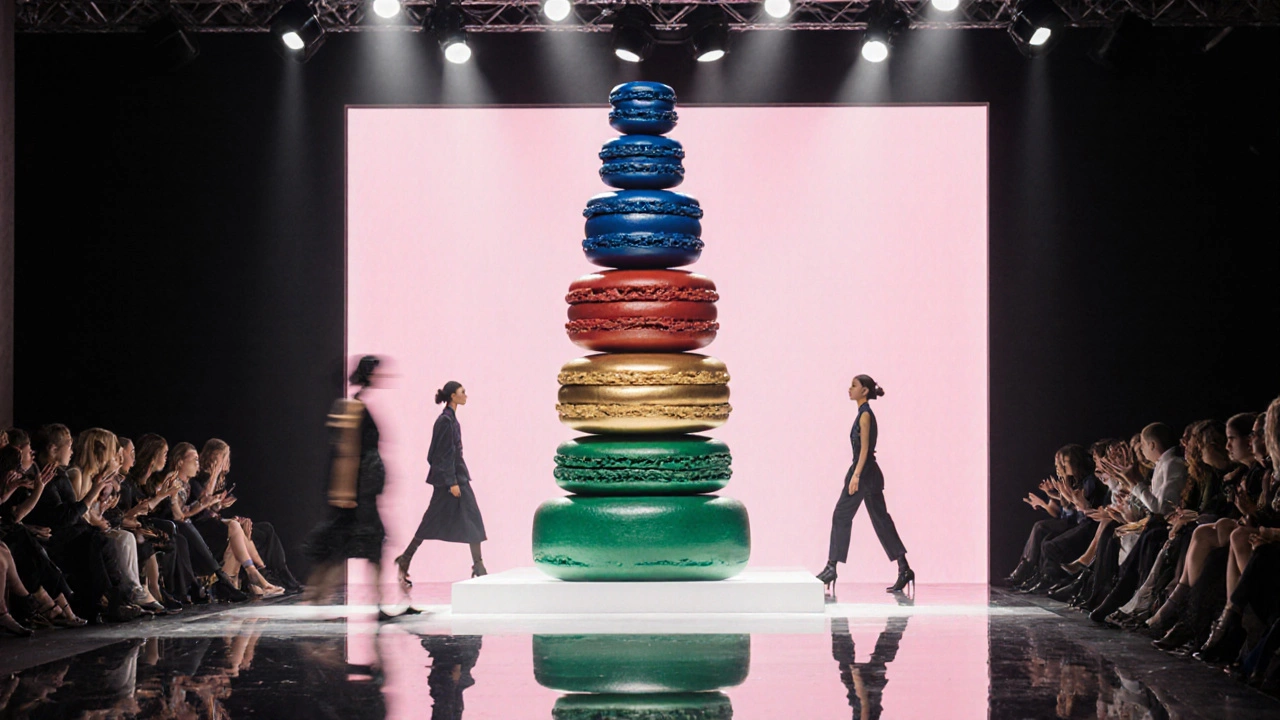
Cultural significance in France
Macarons are more than desserts; they’re a symbol of French elegance. You’ll find them at:
- Afternoon tea: Served with tea or coffee in upscale cafés.
- Weddings: Decorative macaron towers replace traditional cake slices.
- Fashion weeks: Designers often launch limited‑edition flavors that match their collections.
Because they’re easy to transport and look beautiful on a plate, they’ve become a go‑to gift for tourists wanting a taste of Parisian chic.
How to spot authentic French macarons when you shop
Not every “macaron” you see abroad follows the French standard. Look for these clues:
- Shell shape: Classic macarons have a smooth, glossy top and a flat, slightly rounded bottom.
- Color consistency: The color should be uniform across the shell; uneven spots often signal shortcuts.
- Texture test: Lightly tap the shell - it should produce a satisfying “snap.”
- Ingredients label: Real French macarons list almond flour, powdered sugar, and egg whites as primary ingredients.
- Origin stamp: Some upscale shops label “Made in France” or “Paris‑style.”
If you can’t verify the source, a quick online search on the bakery’s reputation usually saves you from a sub‑par purchase.
Home‑baking cheat sheet: avoid the most common pitfalls
Making macarons at home feels intimidating, but these tips keep you on track:
- Age your egg whites: Separate them a day ahead and store uncovered in the fridge. Cold whites whip up more stable meringue.
- Sift almond flour and sugar twice: Prevents grainy shells.
- Watch the “macaronage” stage: Fold the batter until it flows like lava; over‑mixing leads to flat shells, under‑mixing causes cracks.
- Rest the piped shells: Let them sit 30‑60 minutes before baking so a skin forms.
- Use a convection oven or a low fan speed: Even heat reduces cracking.
- Control humidity: If it’s rainy, add a bit more almond flour to the batter.
Follow these, and you’ll get that coveted “feet” - the ruffled edge at the base of each shell.
Quick reference checklist
- Word origin: Italian “maccherone” → French “macaron.”
- Core ingredients: almond flour, powdered sugar, egg‑white meringue.
- Pronunciation: /ma.ka.ʁɔ̃/.
- Key brands: Ladurée, Pierre Hermé.
- Difference from macaroon: almond vs. coconut, light vs. chewy.
Is a macaron the same as a macaroon?
No. A French macaron is made with almond flour and has a crisp‑outside, soft‑inside texture, while a macaroon is a coconut‑based cookie that’s chewy and dense.
How do you pronounce macaron correctly?
In French it’s /ma.ka.ʁɔ̃/. Say “ma‑ka‑ron” with a soft “r” and a nasal “on” at the end.
Can I make macarons without a stand mixer?
Yes, but a whisk or hand‑beater will require more effort to reach stiff peaks in the meringue, and the folding step becomes even more critical.
What’s the best way to store homemade macarons?
Place them in an airtight container in the fridge for up to five days. Let them come to room temperature before eating for the best texture.
Are macarons gluten‑free?
Yes. Since the recipe uses almond flour instead of wheat flour, traditional macrons are naturally gluten‑free.

